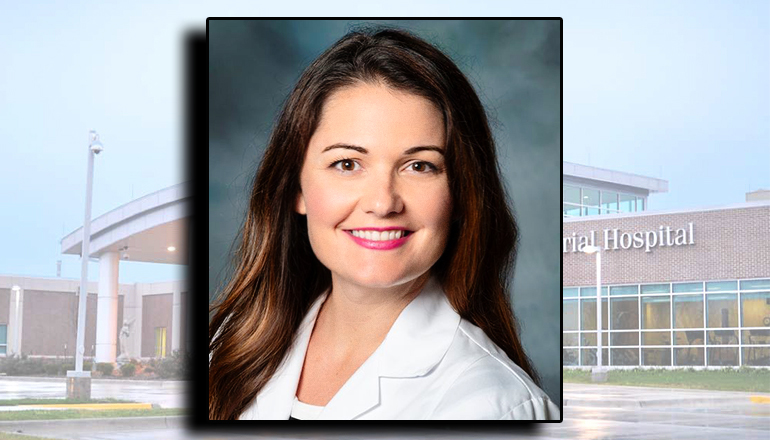October is National Breast Cancer Awareness Month. Since the program began in 1985, mammography rates have more than doubled for women age 50 and older. According to the American Cancer Society, breast cancer is the most common cancer among American women, outside of skin cancers. About 1 in 8 (13%) women in the US will develop invasive breast cancer during their lifetime.

“It is important to discuss your risk factors with your doctor, who can help you determine the appropriate age to start screening and the frequency of screening tests, such as 3-D mammography, self-breast exams, and clinical breast exams,” said Khannah Smith, M.D., a physician at Wright Memorial Physicians’ Group. “The majority of breast cancers in the United States are diagnosed as a result of an abnormal screening study.”
The American Cancer Society’s estimates for breast cancer in the United States for 2021 are:
- About 281,550 new cases of invasive breast cancer will be diagnosed in women.
- About 49,290 new cases of carcinoma in situ (CIS) will be diagnosed (CIS is non-invasive and is the earliest form of breast cancer).
- About 43,600 women will die from breast cancer.
“Breast cancer awareness is at an all-time high in the US, which has certainly helped save lives,” said Dr. Smith. “Advances in technology, such as 3-D mammography, have certainly aided in earlier diagnosis of the disease. Earlier diagnosis, along with advanced treatment options, has resulted in death rates from breast cancer continuing to drop.”
Knowing personal risk factors can help a woman and her doctor plan a course of action that may reduce her chances of developing the disease or detect it in its earliest, most treatable stages.
The most common risk factors, according to The American Cancer Society:
- Sex – This is the main risk factor for breast cancer. Men can get breast cancer, too, but this disease is much more common in women than in men.
- Race – Overall, white women are slightly more likely to develop breast cancer than African American women, although the gap between them has been closing in recent years. In women under age 45, breast cancer is more common in African American women. African American women are also more likely to die from breast cancer at any age. Asian, Hispanic, and Native American women have a lower risk of developing and dying from breast cancer.
- Age – As you get older, your risk of breast cancer goes up. Most breast cancers are found in women age 55 and older.
- Personal History – A woman with cancer in one breast has a higher risk of developing a new cancer in the other breast or in another part of the same breast. (This is different from a recurrence or return of first cancer.) Although this risk is low overall, it’s even higher for younger women with breast cancer.
- Family History – Overall, about 15% of women with breast cancer have a family member with this disease. It’s important to note that most women who get breast cancer do not have a family history of the disease. But women who have close blood relatives with breast cancer have a higher risk:
- Having a first-degree relative (mother, sister, or daughter) with breast cancer almost doubles a woman’s risk. Having 2 first-degree relatives increases her risk about 3-fold.
- Women with a father or brother who has had breast cancer also have a higher risk of breast cancer.
- Genetics – About 5% to 10% of breast cancer cases are thought to be hereditary, meaning that they result directly from gene changes (mutations) passed on from a parent. BRCA1 and BRCA2 are the most common cause of hereditary breast cancer is an inherited mutation in the BRCA1 or BRCA2 gene. Other gene mutations can also lead to inherited breast cancers.
- Pregnancy History – Women who have not had children or who had their first child after age 30 have a slightly higher breast cancer risk overall. Having many pregnancies and becoming pregnant at an early age reduces breast cancer risk.
- Breastfeeding History – Most studies suggest that breastfeeding may slightly lower breast cancer risk, especially if it’s continued for a year or more.
- Early Menstruation/Late Menopause – Women who have had more menstrual cycles because they started menstruating early have a slightly higher risk of breast cancer. The increase in risk may be due to a longer lifetime exposure to the hormones estrogen and progesterone. Women who have had more menstrual cycles because they went through menopause later (after age 55) have a slightly higher risk of breast cancer.
- Radiation – Women who were treated with radiation therapy to the chest for another cancer when they were younger have a significantly higher risk for breast cancer. This risk depends on their age when they got radiation.
- Birth Control – Some birth control methods use hormones, which might increase breast cancer risk.
When individuals are diagnosed with breast cancer, Wright Memorial Hospital provides an Oncology Nurse Navigator program, free of charge, to help navigate the process.
“We are truly blessed to have an Oncology Nurse Navigator program onsite at Wright Memorial Hospital,” said Dr. Smith. “Most smaller community hospitals aren’t able to provide a service like that, free of charge. The nurse navigator can help the patient schedule testing and genetic counseling offers free classes that help cancer patients with nutrition and beauty tips, and many other services that make a cancer diagnosis more manageable.”
To schedule an annual screening at Wright Memorial Hospital, call 660-358-5818, or schedule an appointment on the Saint Luke’s website.







